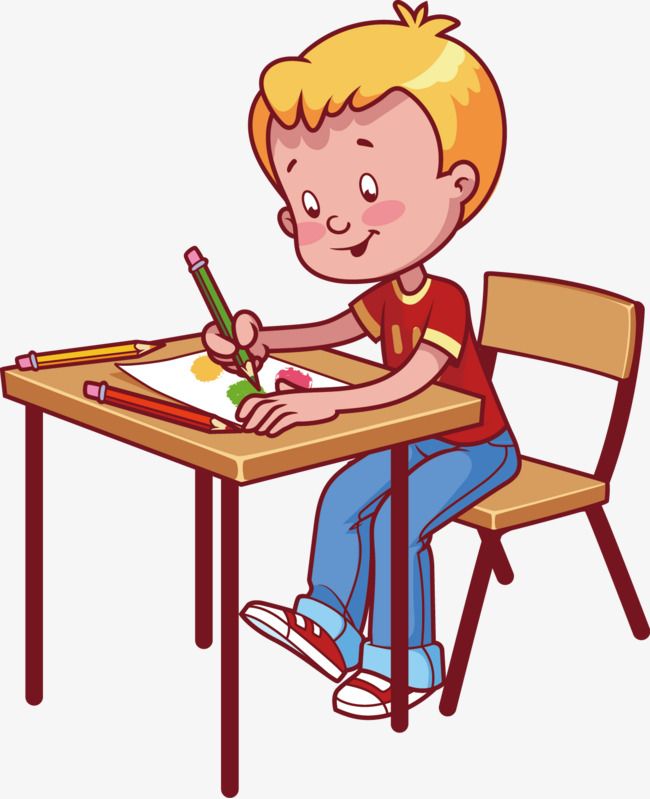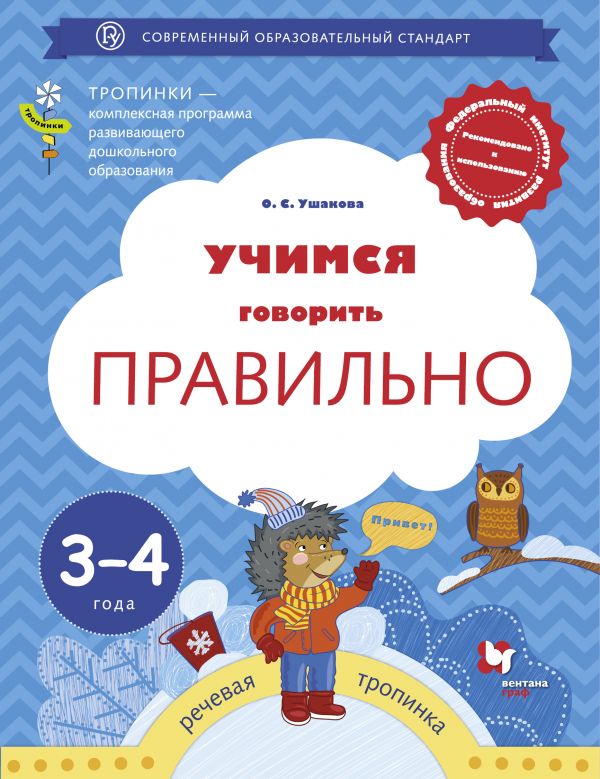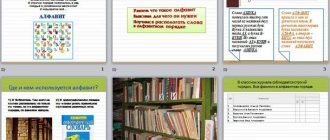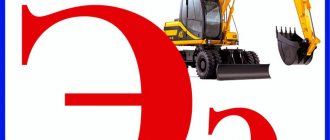Senior group. Senior preschool age. Children 5-6 years old
Summary of the final speech therapy lesson in the senior literacy group “Queen of Knowledge” Summary of the final open lesson in the senior combined group “Queen of Knowledge”
Speech therapist teacher: Genyush Tatyanna Vladimirovna Purpose: Generalization and consolidation of the material covered Objectives: Correction-educational: 1. Consolidate children’s knowledge about consonants and vowels (...
Summary of GCD in the senior speech therapy group for literacy “Sound [Z]” Summary of GCD in the senior speech therapy group for literacy “ Sound Z ”
.
Target. Clarification of the pronunciation of the sound “Z”
, determination of the presence
of a sound in a word and its place , syllabic reading according to the scheme . Exercise in clear pronunciation of words with the sound “Z”
.
composing sentences with the sound “Z”
. By…
Literacy lesson in 1st grade on the topic “My family and friends”
Motivation1.
Organizational moment:
Good morning, guys. I'm glad to welcome you.
Good morning! Have a rainbow day! May autumn sadness not touch you!
The bright sun is shining through the window, as if with its rays it is trying to warm us on this autumn day, to wish us well and good luck in our lesson today.
Let us now wish each other well and smile.
Starter
- Teacher:
— Guys, today we have an unusual lesson - a travel lesson.
Guess what we will travel on:
I eat coal, I drink water, When I get drunk, I speed up. I’m carrying a train of one hundred wheels and I call myself... (Steam locomotive)
- And what locomotive can you guess on now?
Let's watch a fragment of the cartoon.
- What kind of engine will we travel on? (on the Steam Engine from Romashkovo).
You and I will take a journey to an interesting, very wonderful country. There are a lot of different, respectable, decent residents here. And believe me, friends, We can’t live without them.
— Does everyone have tickets? Check your backs, head high. Then let's go. What sounds does a steam locomotive make? Movements? Get ready! Go!
Updating of reference knowledge
- Some station outside the window... Smekalkino... The residents of this station know geometric shapes very well and offer us riddles about them.
1. He has been my friend for a long time, Every angle in him is right. All four sides are the same length, I’m glad to introduce him to you, And his name is... (square)
2. You look at me, you look at him, look at all of us. We have everything, we have everything, we only have three. Three sides and three corners, and the same number of vertices. And three times difficult things We will do. (triangle)
3. No corner, no side, And relatives are just pancakes. (circle)
4. Trace the whole brick with chalk on the asphalt, And you will get a figure - You, of course, are familiar with it. (rectangle)
Mid-lesson
1. Introduction of new knowledge
Great, we can move on. The train has left.
We arrive at the Znaykino station
- Look, guys, different figures live at this station. You are already familiar with some of them. They are on the edge of your desk. Let's try to put together the locomotive we are traveling on from these figures.
— You have a template on your desk on which you must glue your figures. Are there enough figures? One template, one figure missing... What to do? (work in pairs)
- Now let’s test our figures. Gently but firmly press the sheet with your palms with the pasted figure.
— Has the appearance of the figure changed? Why? - What are the names of the figures that we already know and that fit on a sheet of paper? (Flat).
2.
Statement of a problematic question and creation of a problem situation
Practical work (I)
- Now put a plasticine board and a piece of plasticine in front of you. And sculpt one of the figures (ball, cube, cylinder)
— Try to flatten your figure without changing it? (does not work)
- What conclusion can we draw?
- This is confirmation that the figures are different.
What types of figures are there? What groups can we divide the figures into? What should these groups be called? (on the board under the word figures
a question mark appears)
?
– The first group of figures is completely placed on a sheet of paper; they are well known to us.
– And the second group of figures did not fit completely on the sheet, these figures have a part that does not fit on the sheet of paper, rises above the surface (prevents them from being pressed). – What should we call the second group of figures?
Setting a lesson goal
T: Let’s set
a goal
for ourselves for the lesson (what we want to learn). (Find out the names of figures that rise above the plane and change their shape when flattened)
(K) Working with the textbook.
– To get an accurate answer, you need to refer to the textbook. – Find information in the textbook that will help us solve the problem. Read the name of each group of shapes.
– What do you call figures that are completely placed on a sheet (plane)? (flat)
– What do you call figures that cannot be completely placed on a plane? They have a protruding part. (volumetric)
Conclusion:
figures cut out of paper are flat, while figures sculpted from plasticine have volume.
They are called volumetric figures
.
We look at the poster “Flat figures”.
- So you know flat figures well, let’s now try to name three-dimensional figures. Some names are easy to remember because they resemble something.
We look at the poster “Volume Figures”, read the names of the figures.
3. Primary consolidation of the material
- Let's try to guess what three-dimensional figures are hidden in the objects around us: box, cube, glass, pyramid, moon
- Do you think we can depict the Moon on a piece of paper? And what kind of figure do we need for this? (circle) Guys, pay attention to how differently flat and three-dimensional figures are depicted. Three-dimensional figures are depicted using chiaroscuro, otherwise it is impossible to show that they rise above the sheet of paper.
But it turns out that modern technology has come so far that it is enough to wear special glasses, and the objects depicted on the sheet appear three-dimensional (3D glasses)
- My eyes are a little tired... Let's do some exercise for the eyes.
Without turning our heads, we just watch the sun with our eyes.
Exercise for the eyes.
4. Generalization and systematization of knowledge.
- Well, before we go to the next station, let’s check whether our visit to Znaykino station was useful.
- What groups can the figures be divided into? (volumetric and flat)
— Circle three-dimensional flat figures on the board in one group. Name them.
(AND)
— Select the necessary items in each row in the table.
— Use an arrow to show which items you will add to the table.
Consolidation of what has been learned
- Well done, let's move on. Zadachkino station is ahead
But in order to get off at this station and warm up, we need to practice solving problems
- Listen to the problem.
The picture contains a rectangle, a cube, a circle, a triangle, a square, a parallelepiped and a cylinder. Which shapes are more numerous: flat or three-dimensional?
— What figures are mentioned in the problem? (the student comes to the board, selects the desired figure and hangs it on the board.)
- What two groups can the figures be divided into? (flat and volumetric)
- Let's divide the figures into groups.
— How many flat figures?
- How many volumes?
- Which figures are there more?
- Well, now we can go out to the station and warm up!
Group work.
– And in life, where three-dimensional figures are often used? (in construction)
– Let’s try to work as builders.
We will build an interesting building or something else at this station. On the first desks of each row there are three-dimensional parts of the construction set (and the children bring their figures from their seats). – Create a structure in groups, rows, in an organized, friendly manner. Peer assessment.
Working with a printed textbook and notebook.
5. Lesson summary.
Reflection of activity. Receiving feedback.
- Well, it’s time for us to go back. While we’re driving, let’s discuss what new we learned in class, what did we learn? (revised knowledge about flat figures, became familiar with the concepts of three-dimensional figures; learned to distinguish between flat and three-dimensional figures)
- Let's remember what tasks we completed today while traveling with the Engine.
— Which task did you find difficult?
- And so we returned home. It's time to say goodbye. You have 3 trains left in the envelope (red, green, yellow), before leaving the class, attach a red train - nothing is clear yet, you have not learned the knowledge about three-dimensional geometric shapes, green - if you felt confident in the lesson, and yellow, if there were any difficulties,
- Thank you for the lesson! You did a great job!
I want to reward you with three-dimensional parallelepiped bodies. Can you guess what the reward is? (I hand out small chocolates). Thank you for your active work! The lesson is over.
Differentiation – how do you plan to provide more support? What challenges do you plan to set for more capable students?
| Assessment – how do you plan? check the level of mastery of the material by students? | |
| Increasing the level of motivation in strong students. Weak students should be given attention and supervision. Help is provided to children who have difficulty cutting out their palms. | Observing the work of students in a group, their independent work. Asking questions about progress of the lesson. Reviewing student work in notebooks (tasks). Asking questions while watching the presentation. |
| Overall rating What two aspects of the lesson went well (think about both teaching and training)? 1: 2: What could improve the lesson (think about both teaching and learning)? 1: 2: What did I discover during the lesson about the class or the achievements/difficulties of individual students that I need to pay attention to in subsequent lessons? | |
Lesson notes for the senior group of kindergarten
Lesson 1 Lesson 2 Lesson 3 Lesson 4 Lesson 5 Lesson 6 Lesson 7 Lesson 8 Lesson 9 Lesson 10 Lesson 11 Lesson 12 Lesson 13 Lesson 14 Lesson 15 Lesson 16 Lesson 17 Lesson 18 Lesson 19 Lesson 20 Lesson 21 Lesson 22 Lesson 23 Lesson 24 Lesson 25 Lesson 26 Lesson 27 Lesson 28 Lesson 29 Lesson 30 Lesson 31 Lesson 32 Lesson 33 Lesson 34 Lesson 35 Lesson 36 Lesson 37 Lesson 38 Lesson 39 Lesson 40 Lesson 41 Lesson 42 Lesson 43 Lesson 44 Lesson 45 Lesson 46 Lesson 47 Lesson 48 Lesson 49 Lesson 5 0
Benefits of classes:
- These classes will enable the child to better acquire knowledge about the variety of sounds and letters;
- will form ideas about words and that words consist of sounds;
- will be a good assistant in the formation of phonemic hearing (the ability to hear and distinguish sounds in speech);
- With the help of adults, children will learn to distinguish sounds in speech, and therefore pronounce them correctly.
- Completing these tasks will help prepare children for learning to read and write in the senior group of kindergarten and in preparation for school.
Each lesson is located on 2 sheets of A4 format. You can print on two sheets, or on one - a page on each side. Total, 50 sheets - 50 full-fledged lessons on developing the pronunciation side of speech and teaching literacy.
The classes are developed based on our website. On the site you will find colorful illustrations, games and exercises to help with the printouts.
Instructions included.

Each lesson contains detailed instructions on how to complete the tasks. Tasks include: a description of the sound being studied, a graphic representation of a letter, a copy of letters, many illustrations of sounds and other interesting material.
In order for the child to find it both interesting and useful at the same time, the classes are supplemented with numerous coloring books . This is both visibility for the child and the development of fine motor skills of the fingers . Let us remind you that it is better to color with triangular pencils: they fit better in the child’s fingers.
Synopsis “About friendship and friends”
Yurieva Olga Ivanovna
MAOU "Progymnasium No. 119"
Abstract
literacy classes in the preparatory group
"About friendship and friends"
Program content
: To consolidate children's knowledge of sounds and letters. Continue to teach children to form words and sentences, divide words into syllables, and find stress. Cultivate friendly, benevolent feelings.
Materials for the lesson:
cards with words, sentences
,
a picture with the image of Baba Yaga littered with apples.
Progress of the lesson
.
Hello children. Let's start the lesson. And what we will talk about today, I invite you to find out for yourself. There's an enchanted word here. Break the spell on him.
1 4 3 2 6 5
The word JURAB is written on the board
Children read: FRIENDSHIP.
What a good word! How many letters are in this word? How many vowels and consonants? How many sounds? Give the characteristics of each sound: d - consonant, voiced, hard; p- consonant, hard; y – vowel; g - consonant, voiced, hard; b - consonant, voiced, hard; a-vowel.
Determine how many syllables are in the word friendship.
Clap
: friend-ba. (Two).
Which syllable is stressed?
(For the first).
Make up sentences with the word friendship. (Children make up)
Guys, name related words. ( Be friends, friendly, friend).
The words are written on the board: it is possible, it is impossible, it is necessary
. What do they mean?
Possible - permission for something, impossible - prohibition of something, necessary - necessity of something.
Fill in the missing word in the sentences:
With a friend...play. With a friend... to quarrel. Friend...respect. Invite a friend... to visit. To be offended by a friend... Ask a friend for a toy.
Guys, true friends never leave each other in trouble. They will always come to the aid of any person who needs it.
Look at the picture: (Baba Yaga is under a pile of apples, only her head is visible from above. A letter is written on each apple).
Baba Yaga wanted apples, shook off the apple tree, and the apples covered her.
Although she is a negative fairy-tale hero, now she needs your help. Shall we help her? ( Yes
).
To free Yaga from apple captivity, you need to choose one apple at a time, while composing words. (Children make up words: cat, current, lump, juice, nose, rice, fruit drink, soup, world, etc.)
Well done, guys, they removed all the apples and freed Baba Yaga.
Guys, how many good deeds you have done today! List them. (They disenchanted the word, inserted the missing words, freed Baba Yaga.)
I hope that you will always do only good deeds. In conclusion, we will sing a song about friendship with you. (Background starts)
Preparation for teaching literacy to children of senior preschool age
Key principles for preparing for literacy
Before moving to secondary school, literacy learning is usually structured as follows: Preparing to learn to read and write (Preschool education) → Ready to learn reading and writing (Preschool education) → Learning to read and write (Primary education) → Developing reading and writing skills letters (Primary education). The basis for successfully developing readiness to become familiar with literacy is the study of sound analysis and the development of graphic skills.
What needs to be taught to a child in preparation for mastering reading and writing:
- Identify sounds that occur frequently in words.
- Name words according to a specific phonemic feature.
- Carry out a sound analysis of words of 3-5 sounds during the modeling process.
- Correlate the spoken word with the diagram of its sound composition.
- In accordance with the game rules, change the sound composition of a word, name words with a certain sound, words of a given sound structure.
- Select words that are similar and opposite in meaning.
- When describing objects, use words that characterize their properties and qualities.
- Compose short stories on topics close to children.
- Compose a story based on a series of plot pictures.
- Participate in a group conversation and ask questions.
You will learn about the features of teaching reading and writing to preschoolers in our materials:
“Let them teach reading at school!”
“Developing preschool children: preparing the hand for writing. Where to begin?"
Features of the educational complex “Paths” and “Pre-school time”
The Russian Textbook Corporation presents the courses “Paths” (for systemic preschool education) and “Pre-school time” (for short-term groups and for preparing children at schools). The projects have already earned high praise from teachers. The publications present a methodology for preparing for learning to read and write, developed by a well-known specialist in the field of preschool and primary education, Lidia Zhurova, based on the popular method of Daniil Elkonin. The method involves preparation through five stages:
The first stage (and the most important). Skill training:
- intonationally highlight the sound in a word;
- name words with a given sound;
- highlight and name the first sound in a word;
- distinguish between hard and soft paired consonants (without introducing terminology).
Second phase. Teaching children the action of the sound composition of a word. During the sound analysis of words, the sound composition of the word is modeled using chips.
Third stage. Introducing letters that represent vowel sounds.
Fourth stage. Acquaintance with letters denoting consonants and mastering the reading mechanism.
Fifth stage. Working out the reading mechanism using material from the entire alphabet.
Let's take a closer look at how to build a sound analysis.

Let's learn to speak correctly. 3-4 years. Child benefit
The manual presents tasks on speech development aimed at clarifying the content of classes with children in the 2nd junior group of a preschool educational organization. The manual complies with the Federal State Educational Standard for Preschool Education (2014). The texts in the manual are intended to be read to children by adults.
Buy
Sound Analysis Action Operations
- Pronouncing a word while simultaneously moving the pointer along the sound pattern (the pronunciation and hand movement are being coordinated).
- Pronouncing a word with intonation highlighting the first sound.
- Pronunciation of the first sound is isolated, as it is heard in the word.
- Designation of sound with a chip (the chip is placed in the first cell).
- Continuation of work with subsequent sounds of the word in the indicated logic: the child points the pointer according to the diagram, pronounces the entire word, holds the pointer in the second cell, intonationally highlights the second sound, names the second sound in isolation and fixes it with a chip, then also highlights the third sound.
- After marking the last sound with a chip, it is mandatory to read the entire word.
The first stage - familiarization with sounds - is very important.
If a new student appears in a group several months before the end of preschool education, then the teacher must make a choice: immediately teach such a child to read or start preparing him? The right decision would be to choose preparation, since knowledge of phonemes will be useful to the child at school. #ADVERTISING_INSERT#

